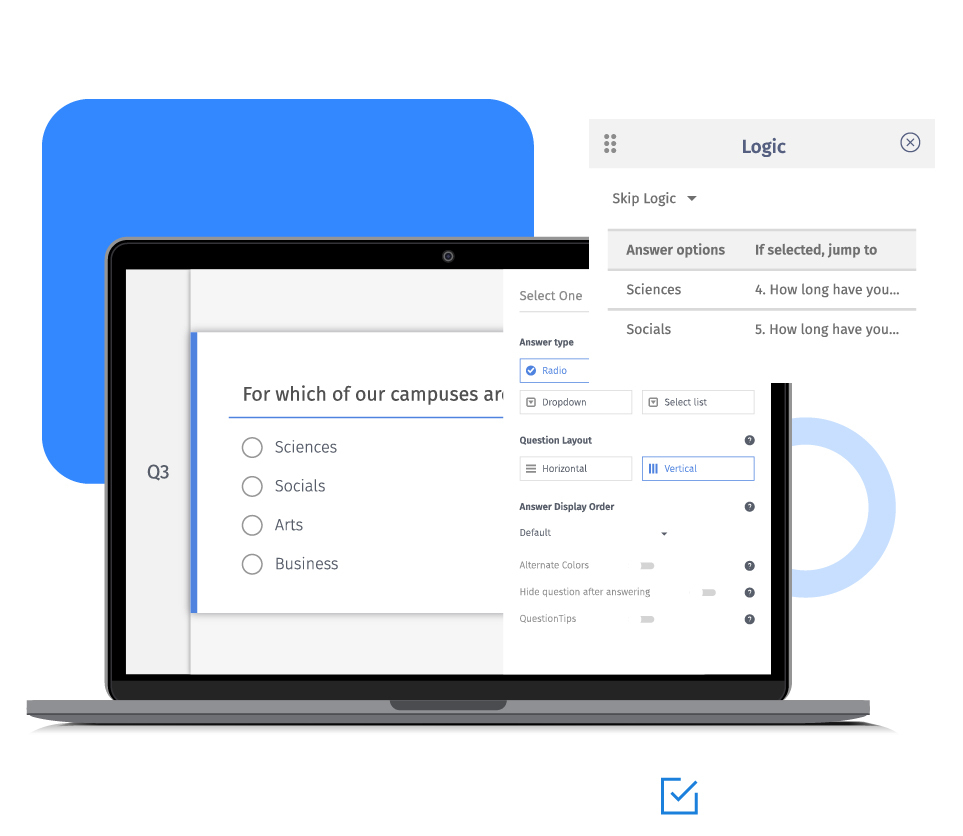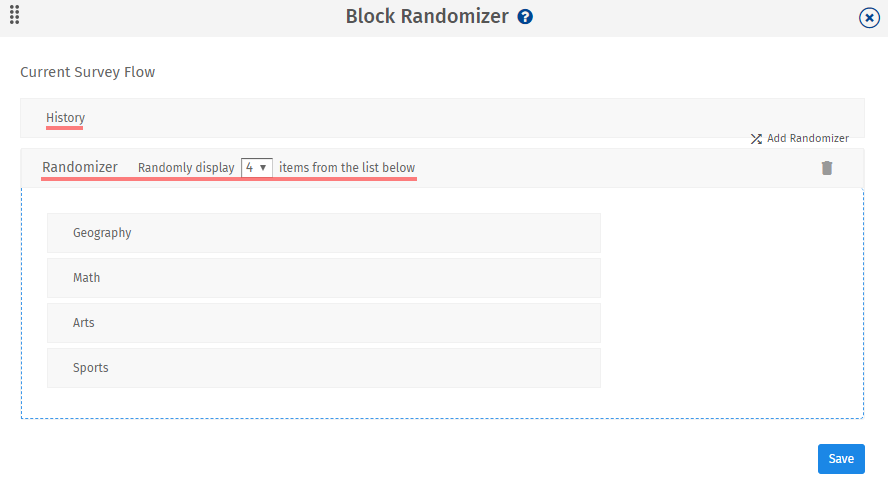Why structure a survey using a block randomizer?
The quality of data depends on various factors. Some of them are the type of questions asked, the depth and breadth, number, topics covered, research method, etc.
Another factor that affects data quality is the order of questions. The sequence of items can impact the way a respondent thinks and make choices. Hence, there is a high possibility that the respondents may feel inclined to answer in a particular direction.
Thus, the survey creator unknowingly affects the way a respondent answers the questions. This effect is known as order bias and affects the results of the research. Reports generated from the data inflicted with order bias generate inaccurate insights.
A block randomizer lets you select a group of questions that must be asked to respondents in random order. You can keep one or more blocks fixed and randomize the order of others. Alternatively, you can also display all blocks of questions randomly. You can also randomize questions within a survey block.
Example of a survey block randomizer
Consider an online quiz with questions on different subjects like history, geography, math, language, art, sports, etc. You can add blocks of questions for each topic. For students majoring in history, the history question block will be kept constant. You can present other blocks randomly.

Uses of a block randomizer
Ask follow up questions: A block randomizer can be used to ask follow-up questions on the primary subject. For instance, if you are running an NPS survey, the first question will be 'On a scale of 0-10, how would you rate our products and services?'. This question will remain fixed. Then you can ask NPS follow-up questions randomly.
Concept testing: You can use block randomization while asking respondents to rate different concepts. Market researchers can use this feature of survey software to show different ideas and ask respondents to select their favorite choice.
Online tests: You can add logic to blocks of questions in online quizzes so that all respondents are asked questions randomly.
Advantages of survey block randomization
Eliminate order bias: Market researchers can use block randomizer to make sure that the survey results are free from any error. They need unbiased and honest opinions to generate reports and derive insights from the data.
Remove monotony from answering questions: Answering questions that are in a similar flow of content and tone might feel dull and boring. Presenting questions in random order removes this monotony and maintains the interest of respondents in the survey. Such an order of items leads to a better quality of data and a higher completion rate.
How to randomize the order of a block of questions?
Learn how to set up and use this feature with our help file on Survey Block Randomizer.
Survey Software Easy to use and accessible for everyone. Design, send and analyze online surveys.
Research Suite A suite of enterprise-grade research tools for market research professionals.
Customer Experience Experiences change the world. Deliver the best with our CX management software.
Employee Experience Create the best employee experience and act on real-time data from end to end.






